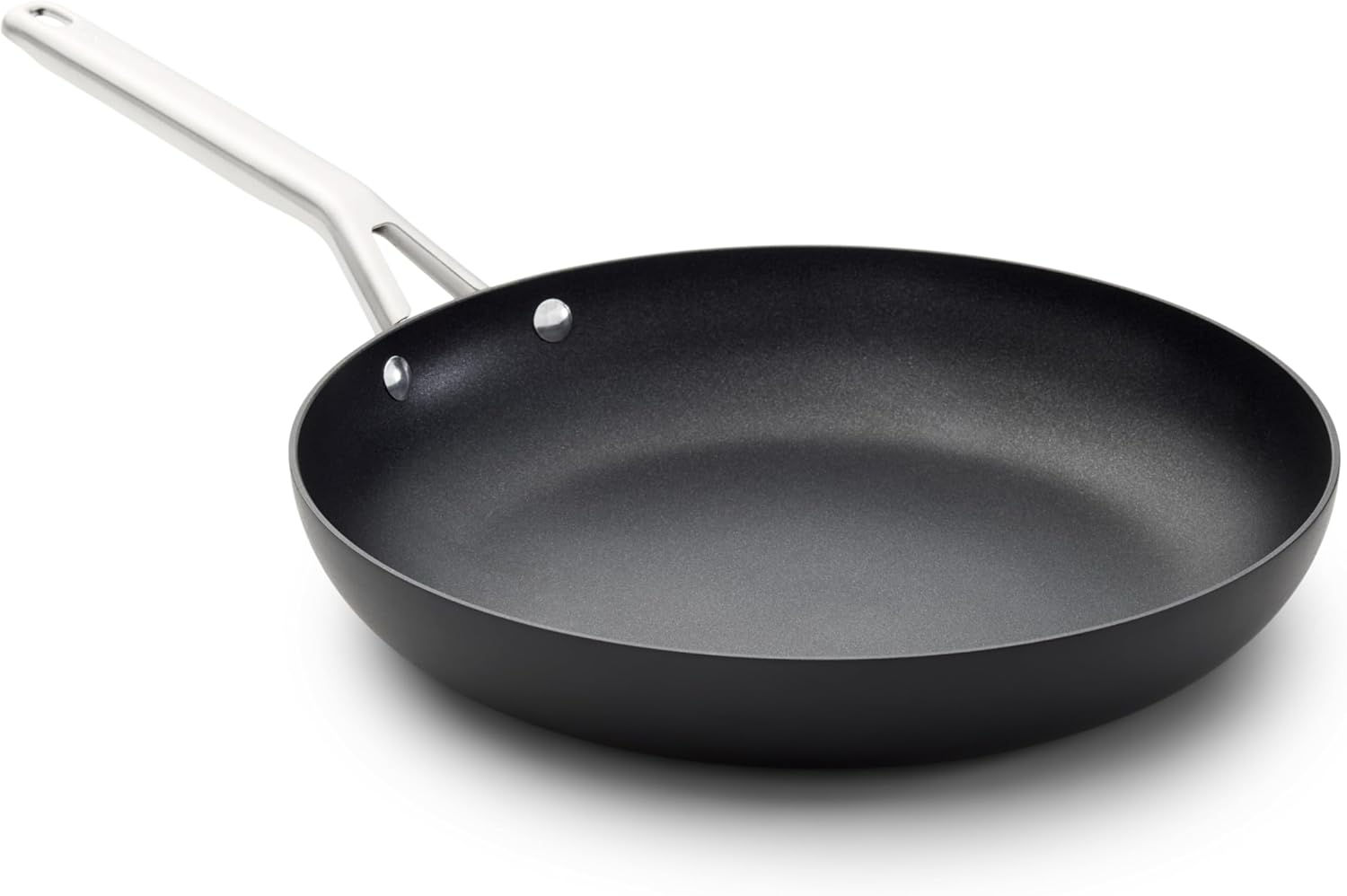





Price: $59.99 - $39.99
(as of Apr 15, 2025 03:45:39 UTC - Details)
The Best Skillet: Your Ultimate Guide to Choosing the Perfect Cooking Companion
Introduction
When it comes to cooking, having the right tools can make all the difference. Among these tools, a skillet stands out as an essential item in every kitchen. Whether you're sautéing vegetables, searing meats, or frying eggs, the best skillet can elevate your cooking experience. In this guide, we will explore everything you need to know about selecting the best skillet for your culinary adventures. From understanding different materials to exploring various sizes and features, we've got you covered. So, let's dive in and discover how the right skillet can transform your cooking!
Understanding Different Skillet Materials
Cast Iron Skillets
Cast iron skillets are renowned for their heat retention and even cooking. They are ideal for frying, baking, and even grilling. One of the key advantages of a cast iron skillet is its ability to develop a natural non-stick surface when seasoned properly. This means you can whip up delicious meals without worrying about sticking or burning. Plus, cast iron skillets are incredibly durable and can last a lifetime if cared for correctly.
Non-Stick Skillets
For those who prioritize easy cleanup, non-stick skillets are a popular choice. They come with a coating that prevents food from sticking, making them perfect for delicate dishes like pancakes or fish. However, it's essential to use the right utensils to avoid scratching the surface. Non-stick skillets are great for low-fat cooking since they require less oil, making them a healthier option for many.
Stainless Steel Skillets
Stainless steel skillets are known for their durability and resistance to rust and staining. They provide excellent heat distribution, making them perfect for searing meats and sautéing vegetables. While stainless steel skillets do not have non-stick properties, they can be seasoned with oil to create a natural non-stick surface. This versatility makes them a favorite among professional chefs.
Choosing the Right Size Skillet
Small Skillets for Individual Meals
If you often cook for one or two people, a small skillet (around 8 inches) is ideal. It's perfect for making quick meals like single omelets or sautéing a small portion of veggies. Plus, they're easy to store and heat up quickly, saving you time and energy in the kitchen.
Medium Skillets for Family Cooking
A medium skillet (around 10-12 inches) is a versatile option for families. It can handle a variety of dishes, from stir-fries to pasta sauces. With enough surface area to cook multiple servings at once, a medium skillet is a must-have for busy households.
Large Skillets for Batch Cooking
For those who love to meal prep or entertain, a large skillet (over 12 inches) is essential. These skillets allow you to cook larger quantities of food, making them perfect for family gatherings or parties. Plus, they provide ample space for browning meats or sautéing large batches of vegetables.
Features to Look for in a Skillet
Oven-Safe Skillets
If you enjoy cooking dishes that require finishing in the oven, look for an oven-safe skillet. Many cast iron and stainless steel skillets can withstand high temperatures, making them perfect for recipes that start on the stovetop and finish in the oven.
Heat Distribution
Even heat distribution is crucial for consistent cooking. A skillet that heats evenly will prevent hot spots, ensuring your food cooks uniformly. Look for skillets made with materials that promote even heat distribution, like stainless steel or cast iron.
Ergonomic Handles
Comfort is key when handling hot cookware. Skillets with ergonomic handles provide a secure grip and make it easier to maneuver, especially when transferring food. Look for handles that are heat resistant and designed for easy lifting.
Maintenance and Care for Your Skillet
Seasoning Your Cast Iron Skillet
If you opt for a cast iron skillet, proper seasoning is essential for maintaining its non-stick surface. After each use, clean your skillet with hot water and a brush, then dry it thoroughly. Apply a thin layer of vegetable oil and heat it on low for a few minutes to keep it seasoned.
Cleaning Non-Stick Skillets
To maintain your non-stick skillet, avoid using abrasive scrubbers that can damage the surface. Instead, use a soft sponge and mild detergent. If food gets stuck, soak the skillet in warm, soapy water before gently scrubbing.
Care for Stainless Steel Skillets
Stainless steel skillets are easy to clean but can develop stains over time. To remove stains, use a mixture of baking soda and water to create a paste. Apply it to the stained areas, let it sit, and then scrub gently before rinsing.
Conclusion
In summary, choosing the best skillet for your kitchen involves understanding the different materials, sizes, and features available. Whether you prefer the durability of cast iron, the convenience of non-stick, or the versatility of stainless steel, there is a skillet out there that meets your needs. By considering factors like size, heat distribution, and maintenance, you can select the perfect skillet to enhance your cooking experience. Remember, the right skillet not only makes cooking easier but also more enjoyable. Happy cooking!
Kitchen Tested Over 100,000 Times: Superior cooking performance backed by rigorous durability testing.
Dishwasher-Safe: For effortless cleanup, frying pan and lid are dishwasher safe.
Hard-Anodized Aluminum Construction: Provides fast and even heating for precision cooking results.
Stay-Cool Handles: Long stainless steel handles keep cool on stovetops.
Oven Safe up to 450 Degrees F: Goes from stovetop to oven with ease.
Advanced Nonstick Technology: Keeps frying pan performing like new.
Includes: 12-inch frying pan.
Electric, Glass, & Gas Stove Compatible: Versatile nonstick cookware for use in every kitchen.
Limited 10-Year Warranty
